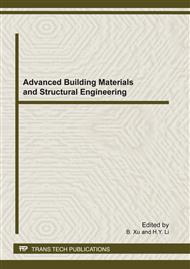p.763
p.768
p.772
p.775
p.779
p.783
p.789
p.793
p.797
The Influence Factors of Wood Dielectric Constant
Abstract:
Dielectric constants of Larix gmelinii were measured at 1.1 MHz to 25 MHz (near to frequency of high-frequency heating ), from oven-drying condition to 100% moisture content, with longitudinal, radial and tangential directions measuring in the experiment. The results showed that: the relationship between MC and dielectric constant can be described as exponential relationship from MC=8% to the fiber saturation point (FSP), above FSP it is linear relationship. The dielectric constant showed decreasing trends when frequency raised. When f﹥10MHz change trend is slow. Permittivity across longitudinal direction is bigger than that across transverse direction,but the difference across tangential direction and that across radial direction is small.
Info:
Periodical:
Pages:
779-782
Citation:
Online since:
February 2012
Authors:
Keywords:
Price:
Сopyright:
© 2012 Trans Tech Publications Ltd. All Rights Reserved
Share:
Citation:


